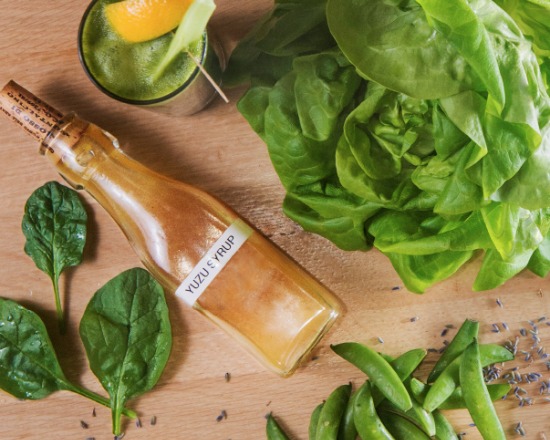
When it comes to super-fresh cocktail creations, Pascaline Lepeltier, beverage director for Rouge Tomate, has fine sense for foraging what’s fresh. As reported by Nancy Matsumoto in the latest edition of Edible Manhattan, the farm-to-fork stylings of Rouge Tomate don’t stop at the plate’s edge; they continue in the glass, too. Here’s what the French ex-pat had to say about putting a little spring in your shaker:
Edible Manhattan: What’s the most unusual ingredient you’ve incorporated into a cocktail at Rouge Tomate?
Pascaline Lepeltier: We’ve used sugar snap peas, seaweeds, nori — right now [head bartender] Cris [Molina] made a transparent blue cheese and olive granité — and house-made almond butter, peanut, etc., etc.
EM: What comes first for you in building a new cocktail — the base spirit or other, fresh ingredients?
PM: As a farm-to-table restaurant, we think first and foremost about seasonal ingredients, and we will build the best drink around the ingredients to showcase it. But at the same time, we need to keep a balance in the spirits used on the list. Finally, if we have a great new spirit, we will probably want to play with it.
EM: Have you partnered with any local farms to have particular ingredients grown specifically for cocktails at RT?
PL: We are working with the same farms as the kitchen so they are not working just for us but for Rouge Tomate.
EM: What spring produce are you most excited about working with in the bar program right now?
PL: Like everybody ramps, rhubarb and peas — and why not morels and asparagus?
EM: Do certain spirits better complement certain fresh items? Like, beets and gin or ginger and bourbon? How do you discern how ingredients might go together?
PL: We do a lot of tasting and we keep our brains open! Brown spirits go better with certain spices, but now you have such a diversity in a single category, lets say gin for example. From the super heavy juniper to the very citrusy — the whole point, though, is to find spirits where the alcohol balance is great without a burning sensation.
EM: Any quick tips for the average tippler on incorporating fresh produce into drinks?
PL: Don’t be scared to experiment — infuse, muddle, macerate, etc etc. — the best way is always to think about the texture of this ingredient — fibery, juicy, starchy, etc. — and from that to build a drink that will enhance that texture.
To whet your whistle and your creative cocktail spirit try this recipe from Lepeltier’s head bartender, Zach Moore, for a mostly locally-minded Mojito that’s just right to finally welcome in the much-missed warm weather.
—
Spring pea Mojito
2 oz pea juice (from Satur Farms)
1.5 oz Owney’s rum
1/2 oz lemon
1/2 oz lavender honey syrup (Moore gets his honey from upstate NY)
Juice from 1/4 yuzu
Club soda
Mint sprig
Method:
Shake all ingredients with ice, add 2 oz of club soda, strain into a highball glass with fresh ice. Garnish with a sprig of mint.
Variation:
Moore suggests that you also switch out the rum for gin in this springy sipper. Greenhook is his locapour liquor of choice.



